People
‘I Got to Be the Artist I Wanted to Be’: Sculptor Maren Hassinger on What Success Looks Like for a Black Artist in America
We spoke with the artist on the occasion of a landmark exhibition at Dia in Bridgehampton.
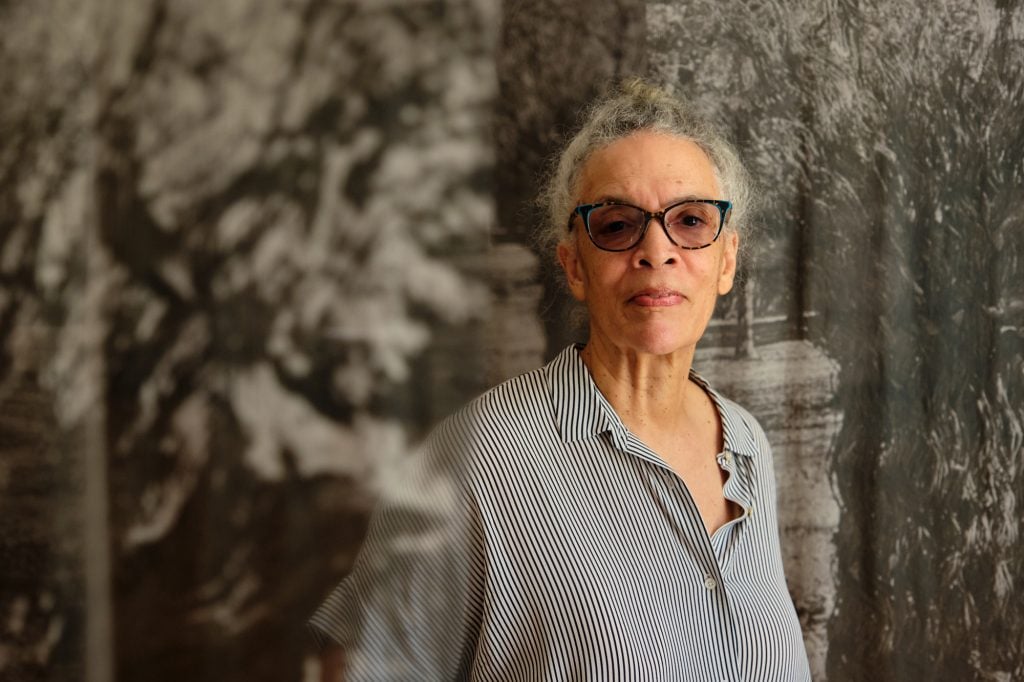
We spoke with the artist on the occasion of a landmark exhibition at Dia in Bridgehampton.

Jessica Lynne

One of the first memories Maren Hassinger shared with me when I called her to discuss her new installation at Dia Bridgehampton was of a surprise studio visit from Andy Warhol and Jean-Michel Basquiat during the early 1980s.
Hassinger, then in residence at the Studio Museum in Harlem, described the encounter as one of the most unusual she’s ever had. She laughed as she detailed the scene, seamlessly flowing into a wellspring of anecdotes that reflect her more than four-decade career.
For the Dia installation, titled The Window, Hassinger filled a first floor gallery with hanging window-sized fabric panels. Printed on each panel is a photograph of the artist’s 1991 work, Circle of Bushes, while outside, on the gallery’s back lawn, Hassinger has installed a bush sculpture fashioned from wire rope, a material that continues to figure prominently in her practice.
It’s impossible to honestly discuss the histories of performance, sculpture, or fiber art without including Hassinger. Her multidisciplinary model positioned her as an important figure in the Black avant-garde artists’ communities of the 1970s, particularly in Los Angeles. Early works such as Pink Trash (1982) or Pas de Deux (1977) embody the artist’s ongoing attention to the dynamic relationship between nature and human life, a dynamic that she continues to probe with this latest work.
As an educator, Hassinger is the emeritus director of the Rhinehart School of Sculpture at the Maryland Institute College of Art, where she worked alongside historian and scholar Leslie King-Hammond, whose friendship, alongside that of curator Lowery Stokes Sims, remains essential to Hassinger to this day.
Throughout the course of our conversation, Hassinger and I discussed all this and more, including her profound career, learning from and within community, and what it means for her to continue working, especially in a moment of great social transition.
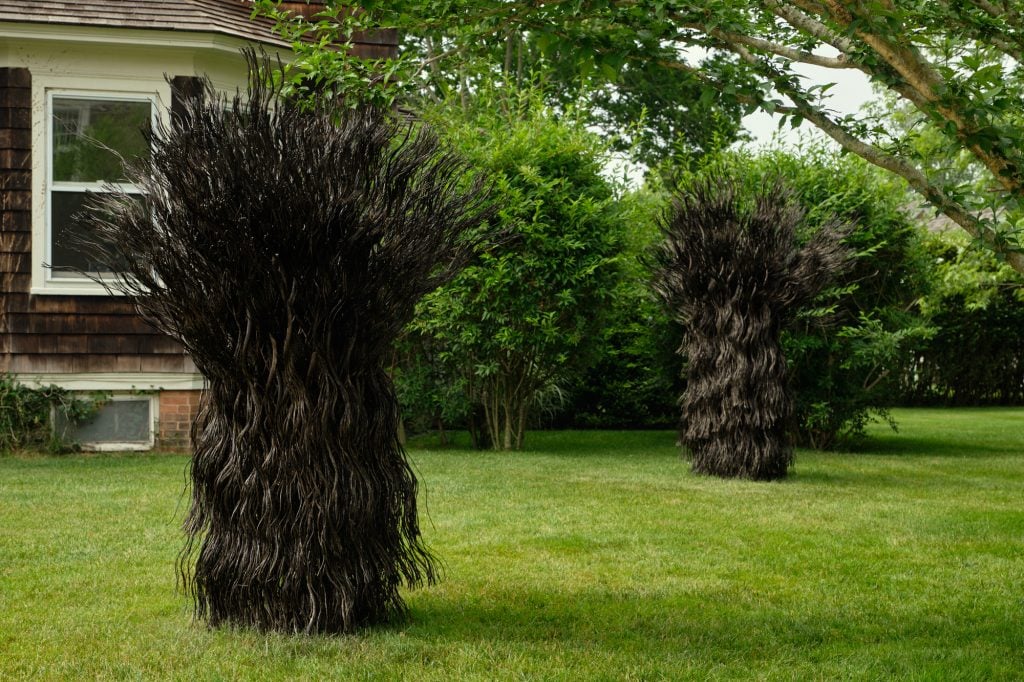
Maren Hassinger, The Window (detail, 2021). Dia Bridgehampton, New York. © Maren Hassinger. Photo: Don Stahl.
I’d like to ask you a question about making, not just in this moment of institutional change that we’ve been witnessing across museums, galleries, and cultural organizations, but also with respect to environmental and ecological catastrophe. What has it been like to think about your work in that kind of a moment, especially when your investigations into nature and our kinship with nature are so primary?
What I really want to do in my work is talk about how we’re all related to one another, and I think that began way back when. It began with thinking about the thing we all share, which is the earth, and thinking about how we’re all going to be at a huge disadvantage when it starts disappearing. We can’t have the resources that we once had. Although I don’t yet think it’s a common belief that it’s possible for us all to live together, I also believe that not doing so is not the way that we’re going to be a success. We have to live together.
You remind me—and I feel I could probably speak for others, too—to not just take those relationships at surface value, but to really think about what’s entangled, and how we’re implicated in that entanglement.
I’m glad that comes out, because most of the time, I’m thinking about it, but I don’t know it’s coming out. I’m not a writer so it’s more abstract in that way. Sometimes you’re asked to write statements for different things, and I’m sure I bring up the idea of equality, but it just kind of gets skipped over as a word.
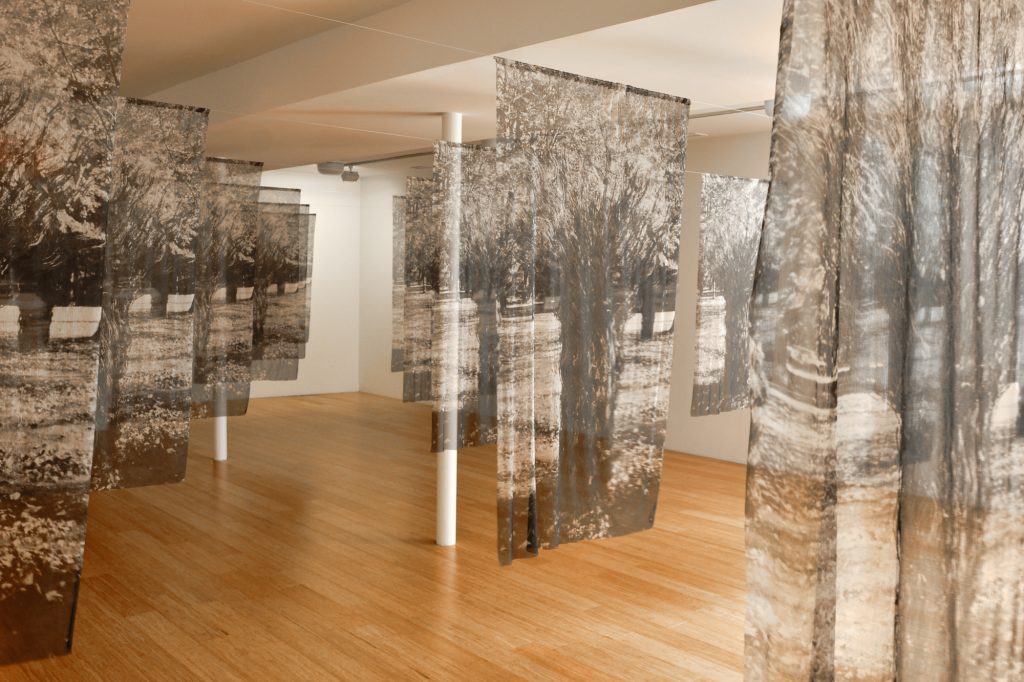
Maren Hassinger, The Window (detail, 2021). Dia Bridgehampton, New York. © Maren Hassinger. Photo: Don Stahl.
In an interview you gave at the Aspen Art Museum alongside curator Lowery Stokes Sims, you talked about your relationship with Sims and artist and curator Leslie King-Hammond. You also discussed Eva Hesse and how you learned from her, even though you never met. Are you still thinking about Hesse’s work? Who are the people who keep you going now?
Well, once you’ve been affected by people like that, you don’t ever stop thinking about them. They’re always in your thoughts. Also in my thoughts are the people who are around me now, literally around me. I have a couple of assistants, one of whom I met when I was still connected to the Maryland Institute College of Art, and another who I met through my gallery here, Susan Inglett Gallery in New York. These are people who are very much younger than me, but their work ethic is so profound, and I trust their intelligence. I really trust it.
Eva Hesse influenced me aesthetically and intellectually, so I would say, yes, she still does. But that was a long time ago when I was really, madly in love with all of her doings and ideas. I would also say that I still admire the position that [artist] Senga Nengudi has always taken about the importance of performance and the importance of really telling your own story using the kinds of materials that you feel closely associated with, without spending a lot of money or without outrageous techniques of production. I admire that.
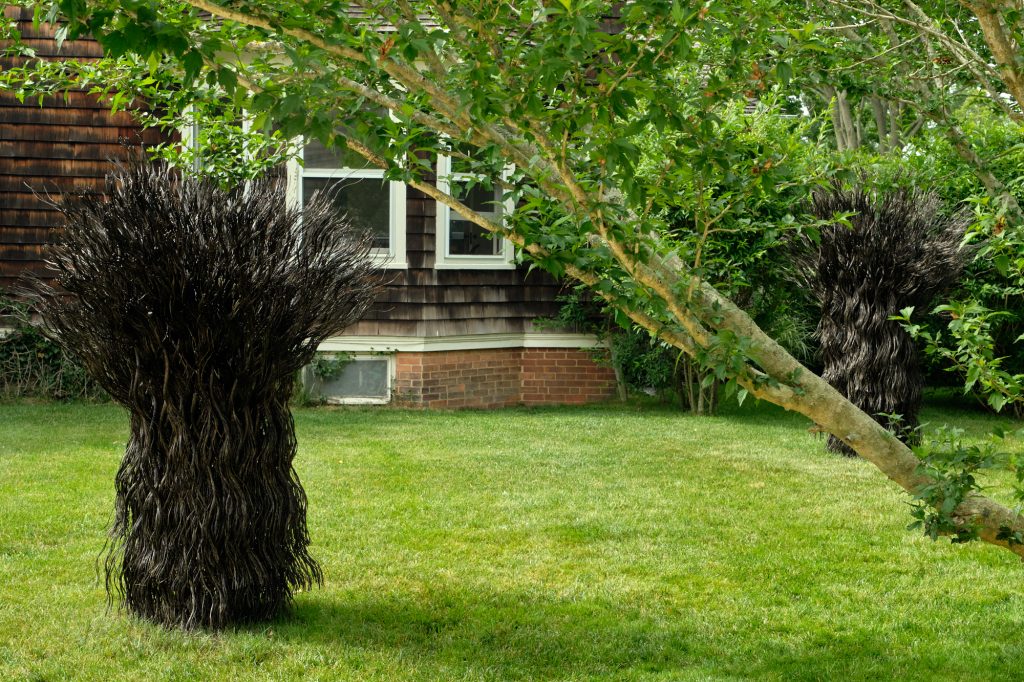
Maren Hassinger, The Window (detail, 2021). Dia Bridgehampton, New York. © Maren Hassinger. Photo: Don Stahl.
Your new installation at Dia encourages me to think about what it means to take documentation from another work, apply it to a new work, and represent that pairing to a public. The use of imprints from a previous installation, Circle of Time (1991), gestures toward a collapsing of time almost, or a refusal to position time in a linear way. I’m curious to know how you’re thinking about time and entanglement and equality in kinship, if that makes sense.
It does make sense, and I feel good about the conversation we’re having because you can’t exactly articulate what you’re thinking. That is my state most of the time. That’s why I think I make art. It’s somehow, in some unconscious way, explaining what I’m thinking and feeling.
This piece is called The Window. You walk in the gallery, and on silk organza panels the size of the window, there is an imprint of a bush. It’s black and white, so it’s not like nature, really. It’s more photographic. And because it’s silk, it’s mounted only across the top. At the far left-hand corner, there’s a window and it’s open. The shade is up. There’s natural light coming in through that window. So, I’m hoping that, given the title, The Window, and given the fact that these things aren’t really impediments, that you can walk through them to get to the window. In doing that, you’ll be able to move these things aside, or they’ll move aside on their own as you walk through them, and you’ll notice the imagery of the bush on them.
When you get to the window and look out, you see this real bush. Well, it’s not a real bush. It’s a wire rope and it’s standing there under a tree. And coming to the window and seeing it like that, in relation to the actual tree and grass—I guess I’m asking you, as a viewer, to think about the nature of what’s real and what isn’t real for you. That’s what I think that piece is about.
For example, I’m not constantly going around saying, “I’m this Black woman who can’t do this and can’t do that.” It’s more like, “I want to do this. Let me see if I can do this.” I think that’s what this piece is about. It’s about liberation, really, and the reality of what is and what isn’t.
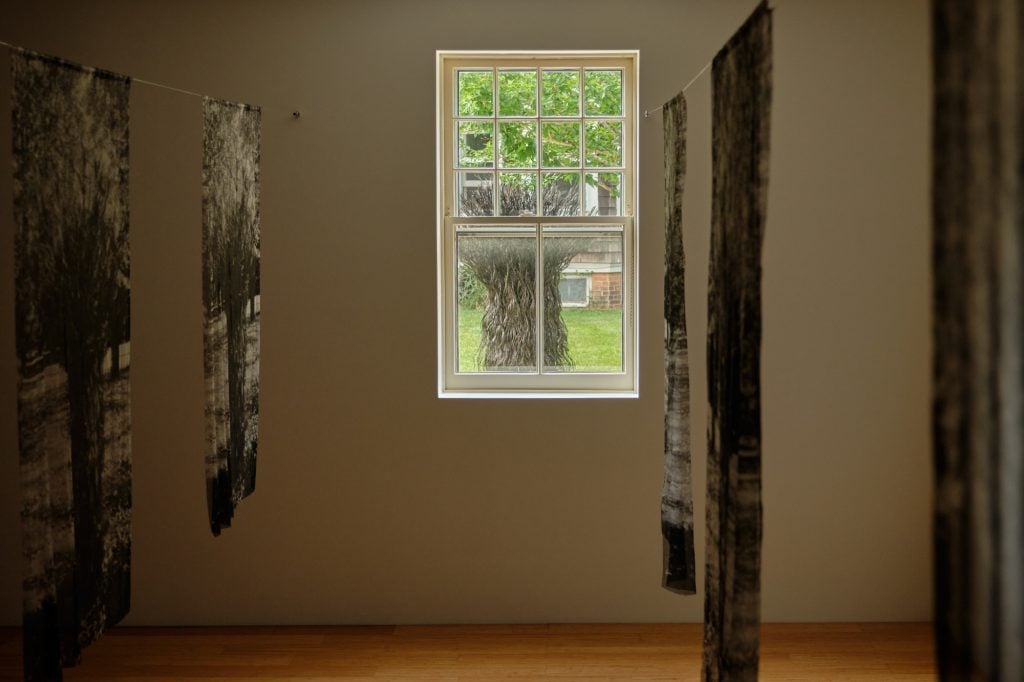
Maren Hassinger, The Window (detail, 2021). Dia Bridgehampton, New York. © Maren Hassinger. Photo: Don Stahl.
There are the things that I want to do—my dreams—and there is also what’s here now. There’s a way to traverse that line. What does it mean to really concretize a dream, to know that there’s a haze, perhaps, but on the other side, you can touch things and you can make them possible, and you can wrap your fingers around them?
The thing about it is, if you know, as I knew, that people look at you and see a Black person, and you look at you and see a person who has an idea about what they want to do with their life, it’s two different things.
The second thing is the important thing: who you see yourself as. That thing is what you pursue. That is the real thing. It’s not what somebody from the outside is looking at. It’s something that you know about yourself, or that you want for yourself. And you can have it. That’s the thing.
You might say the United States is bigoted and fucked up in every possible way, but I can attest to the fact that I had a dream about what I wanted my life to be. And it took a long time, and it wasn’t always happy, but I did it. I’m not patting myself on the back about it, because I just did it this far. I have more that I’d like to do. But at least I got to be the artist that I said I wanted to be. It was really a decision I made. I sat down and made a decision. My life is going to be this. I think that would maybe be inspiring to some people.